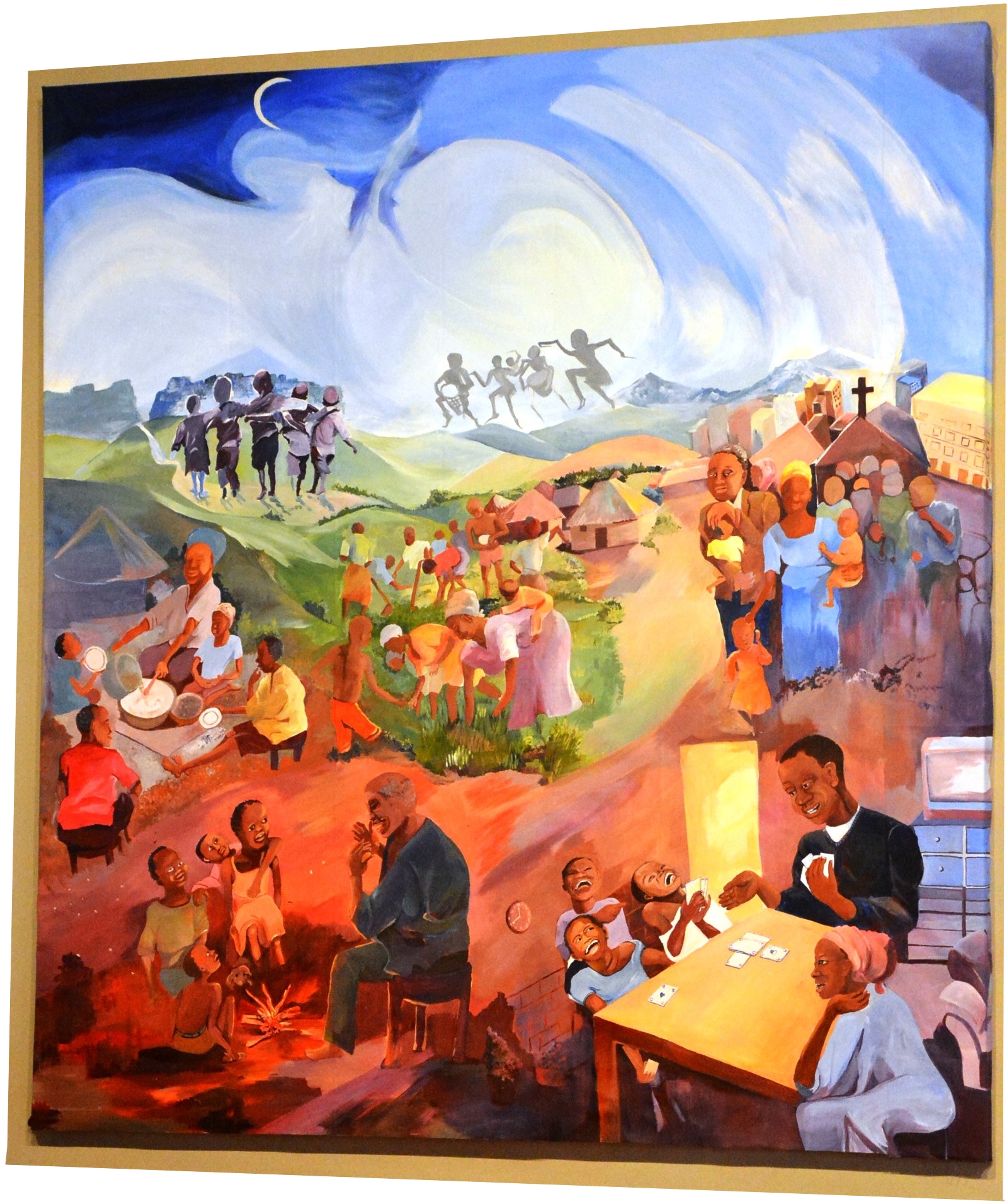
At first glance, the movement of the various characters in the painting seems to take center stage, with colors harmoniously blended throughout. But then….little by little, one begins to see and enter into the painting’s peaceful atmosphere, its serenity. There grows a sense of nostalgia for the values depicted, values that many times we, as europeans, seem to have lost.
The artist, with a few strokes of the brush, wants to tell the story of a people, his own people. It is the story of a people that, despite extreme sufferings continue to preserve those values that are eternal and universal.
In the lower part of the painting, there is a young father playing a card game with all his children, while the mother looks on serenely. A father, who through a game together, strengthens relationships and transmits values. Then, outside, in the shared courtyard, an elder member of the community speaks to a group of youth and children. He is not recounting fables, but rather ancient truths that are carefully passed on from generation to generation, so as not to be forgotten. The young people are entranced by his words. They know that what the elder recounts to them is a treasure to be valued and remembered…
The center of the painting portrays a field, with workers not afraid of back-breaking labor in order to cultivate the land and harvest its fruits. They are a people not easily discouraged when the harvest is scarce, or ruined by drought. They are a people strong of heart and physically strong, gifted with the ability to always begin again, and to share with others all that the earth has given them.
To a careful observer, on the right side of the painting there is another image that cannot escape notice. It comes into evidence a little more than other scenes and, in fact, the painted figures are more luminous in color and more numerous. It’s the image of a group of persons leaving a place of prayer. And one intuits that it is from their contact with the divine that they continue to have the strength to hope always, and to preserve and maintain their values, and transmit them to future generations.
In the upper part of the painting, there are yet two more groups, but in a darker hue, almost fading away. The first highlights ‘ubuntu’ (sometimes tranlated ‘humanity to others’), while the second shows a group dancing, which could express the value of praying also through the actions of one’s body, which is a gift from God. Or, that second image could also represent ancestors, those already “departed” for heaven, but who continue to actively, but invisibly, accompany and assist the journeys of all those still here on earth.
But, what is this ‘ubuntu’ that is so unknown in our so-called, wealthier western world?
“I am who I am. I am happy thanks to the others. If everyone is well, I am well, too – and in fact I feel even better”.
These are the words of a refrain often repeated in Africa, a refrain of afew words, but for which they give witness through countless concrete examples. Even their tremendous capacity to adopt and take into their families so many children in difficult situations , speaks much louder than their words.
The magic of this painting gave birth to a question in my heart: “Could it be that Africa, by shining a light on those treasures so needed in order to live harmoniously with one’s self and the world, will be the continent capable of bringing true peace to our secularized world? “
di Maria Scotto

